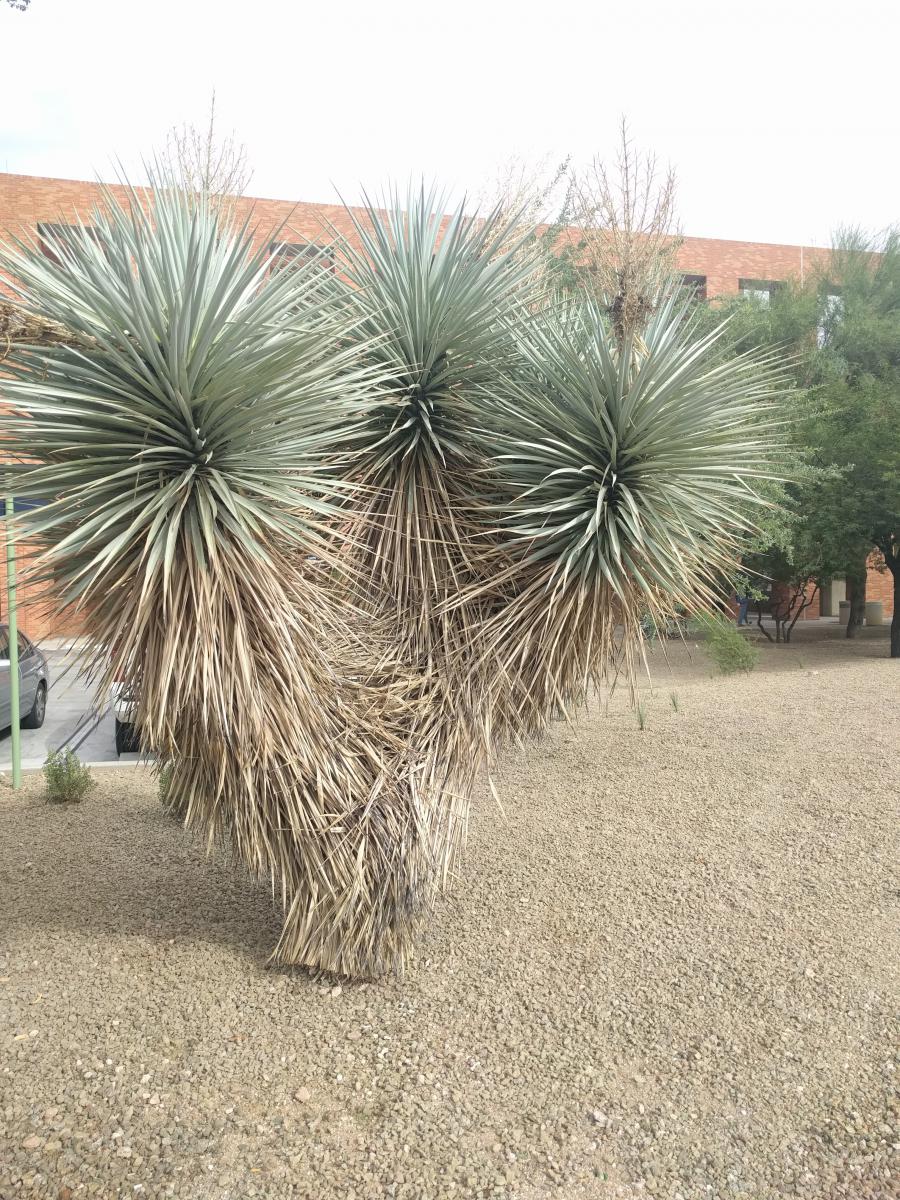When
The University of Arizona campus, consisting of almost 400 acres of buildings and plants, reflects a progression in landscape styles in which the best aspects of heritage are preserved and built upon so that the grounds continually evolve toward sustainable practices in keeping with our times. Some of the oldest trees in Tucson are included in the UA Campus Arboretum and not only contribute current environmental, economic, cultural and social benefits to the community but also serve as a foundation and reference point for future landscape selections. If plants do well, they are preserved and encouraged so that the grounds as a whole is a dynamic place for innovative and sustainable design. Furthermore, when campus development involves construction, the University rallies around the need to rescue valuable plants in the area.

A recent example of this commitment to preserve campus plants is the relocation of the Yucca rostrata. Commonly known as Beaked Yucca, the striking specimen growing 12 feet tall and has 8 branches, found itself threatened by campus building construction and was relocated in late August, 2016 due to the efforts of several campus departments. This Yucca rostrata is one of five in the Campus Arboretum collection. It is characterized by long, narrow, blue-green leaves that form a dense rosette at the top. The branches are covered in a skirt of old leaves. These leaves provide shade and protect the trunk from sunburn while also providing habitat for small critters.

When development plans near the College of Pharmacy put the Yucca rostrata in the footprint of the construction zone, relocation began. Mark Novak, landscape architect with UA Planning, Design and Construction, has a lot of experience with relocating and salvaging plants. He knows the level of challenge required to relocate different plants and how important seasonal timing, preparation are in producing a successful rescue.
So what does a successful relocation involve? Novak says you need to know where the plant is going, what the root sensitivity is and have access to appropriate equipment. The UA’s planning department expertly juggles the challenges of facilitating communication among various stakeholders including multiple campus and off-campus units regularly. They do this using a round-table format in which anyone with an interest in the landscape changes has a chance to provide feedback. The contractor is then expected to respond before moving ahead with the construction process.

The Yucca rostrata was graciously salvaged by UA Facilities Management - Grounds Services and efficiently relocated to the Environment and Natural Resources building in a single day. Boxing and planting immediately thereafter increases the probability that the plant will establish well and survive in its new location.
As a land-grant university dedicated to research, education and outreach. The Campus Arboretum promotes preservation of more than 12,000 plants from all over the world. The Yucca rostrata and every plant on campus not only contributes to the functional ecology of the campus grounds but also ecosystem services as part of Tucson’s green infrastructure.

